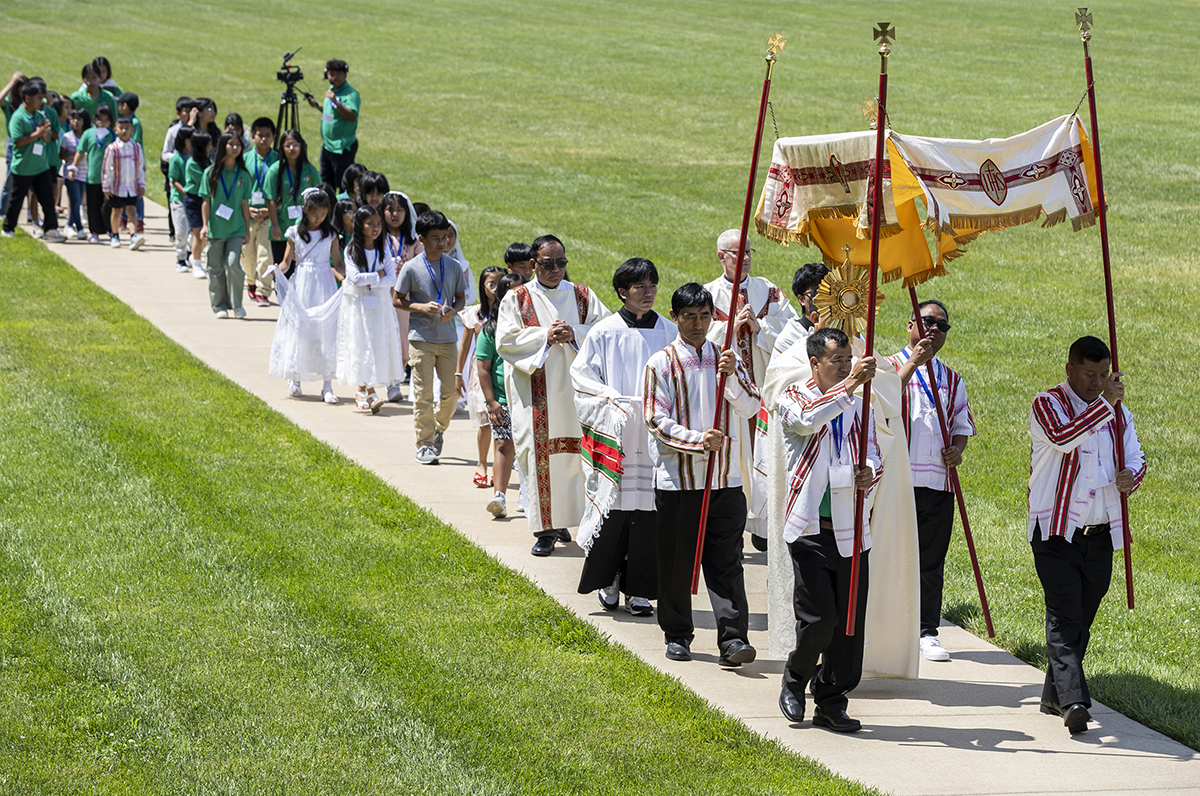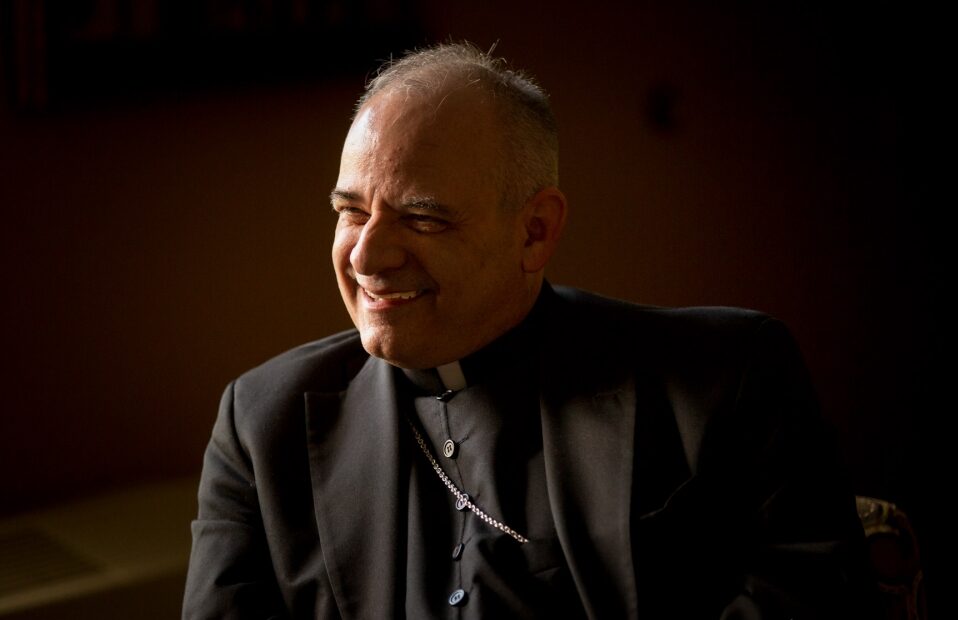Wailing Wall at St. Cronan is source of healing for those affected by clergy abuse

Project has helped facilitate discussion among parishioners
The Western Wall — or Wailing Wall — in the old city of Jerusalem is a sacred place of prayer and pilgrimage, especially among the Jewish people. There is a popular practice of wedging prayer petitions, written on small slips of paper, into the cracks between the stones.
Parishioners at St. Cronan Parish in St. Louis recently established their own version of a Wailing Wall in an effort to process the grief associated with the clergy abuse scandal. The wall, made of paper and measuring nearly 12 feet wide by 4.25 feet long and located in the chapel at the back of the church, is filled with Scripture passages, inspirational quotes and hand-written prayer intentions. Other private intentions can be tucked behind each paper square.

The idea came from St. Cronan’s pastor, Msgr. Jack Schuler, and members of the liturgy committee set out to make it a reality. Handwritten messages have included personal stories of being abused, with others offering specific prayer intentions. “I am sorry for the pain and anguish my brother priests have caused,” one message said. “Father forgive them, they know not what they do,” read another. “Abuse scars all of God’s children,” was another message.
Scripture passages on the wall have included several from Psalms, such as this one: “God, be my rock of refuge, a stronghold to give me safety. You are my rock and fortress; watch over me in my distress” (Psalm 31:3, 8).
Parishioners have been addressing the topic of clergy abuse since the release of the Pennsylvania grand jury report. Other efforts have included a banner placed outside of the church, with the message, “We stand in solidarity with those abused”; a discussion facilitated by counselors who work with abuse survivors and perpetrators; and a recent prayer service to share specific intentions related to abuses by members of the Church.
Pat Fleming and Sue Lauber-Fleming are licensed clinical social workers who facilitated the discussion last fall at St. Cronan, with a focus on moving toward healing. For decades, they have worked with abuse survivors, as well as clergy of different denominations, teachers, coaches and parents and other adults who have abused minors.
The two shared a formula that the couple often tells others: “Abuse happens at the intersection of power, vulnerability, sickness and secrecy,” Pat Fleming said. “We have to learn how to use power in a Gospel way, with servitude and balance, and to protect the vulnerable. We have to get better at keeping no secrets. Survivors and other Church members are an important voice in making sure there is no more secrecy.”
Msgr. Schuler also has addressed with parishioners the topic of clericalism, which he said is a contributor to clergy abuse. Pope Francis, too, has denounced clericalism, which he said “whether fostered by priests themselves or by lay persons, leads to an excision in the ecclesial body that supports and helps to perpetuate many of the evils that we are condemning today. To say ‘no’ to abuse is to say an emphatic ‘no’ to all forms of clericalism.”
“We wanted to give people an opportunity to not just receive information (about clergy abuse), but also process it,” Msgr. Schuler said. “If you’re a priest in the archdiocese, you’re influenced and formed by a clerical culture,” he said. “I tell people I have to deal with this (as a priest). The message is, if you see (abusive situations), say it.”
“We all suffer through this some way or another,” said pastoral associate Diane Gozdzialski. “Of course the physical pain and the physical abuse is way more traumatic. But the whole Church suffers.”
Parishioner Carolyn Coyne said there has been positive response to the Wailing Wall and the discussions about clergy abuse and other abuses by members of the Church. “We wanted something tangible, and our meeting with (Pat Fleming and Sue Lauber-Fleming) opened the door to all of this,” Coyne said. “A great number of people shared, but we thought was there going to be follow through? Is there a way to be able to get some closure on some of these issues?”
The Western Wall — or Wailing Wall — in the old city of Jerusalem is a sacred place of prayer and pilgrimage, especially among the Jewish people. There is a … Wailing Wall at St. Cronan is source of healing for those affected by clergy abuse
Subscribe to Read All St. Louis Review Stories
All readers receive 5 stories to read free per month. After that, readers will need to be logged in.
If you are currently receive the St. Louis Review at your home or office, please send your name and address (and subscriber id if you know it) to subscriptions@stlouisreview.com to get your login information.
If you are not currently a subscriber to the St. Louis Review, please contact subscriptions@stlouisreview.com for information on how to subscribe.






